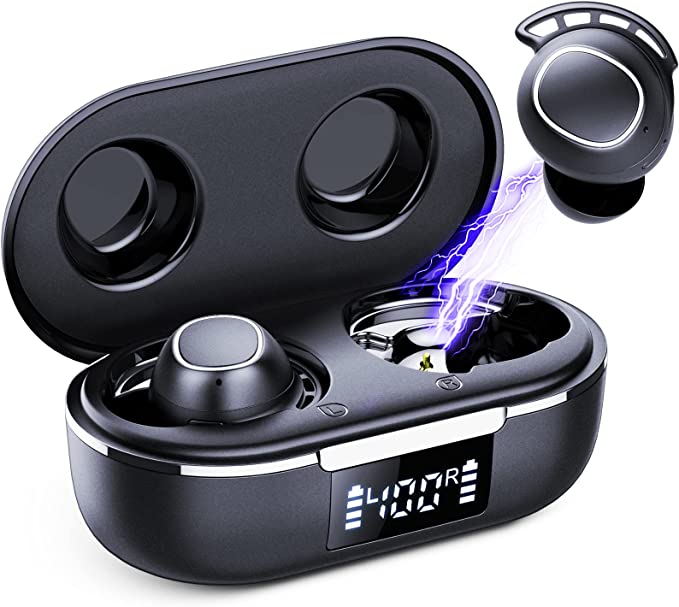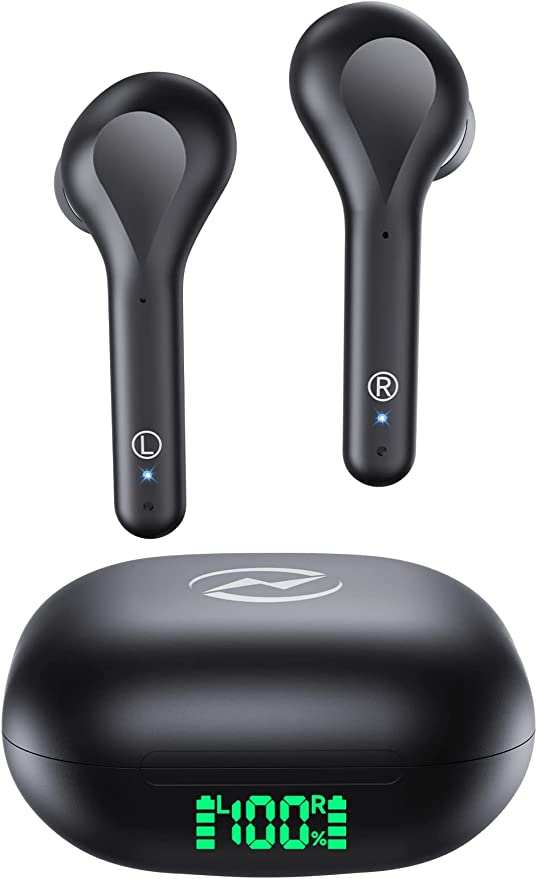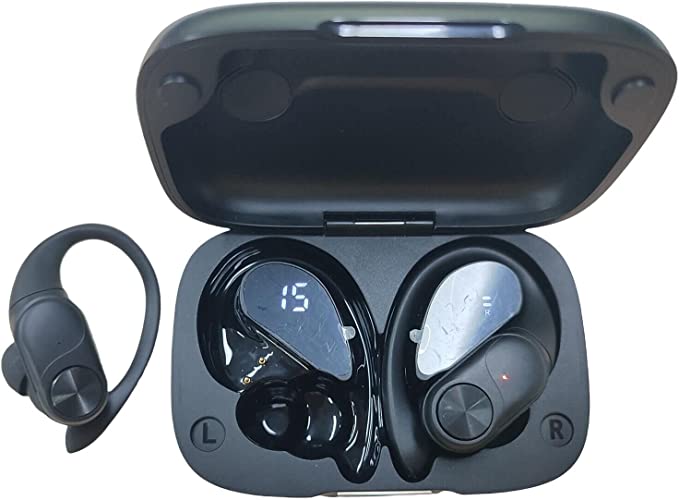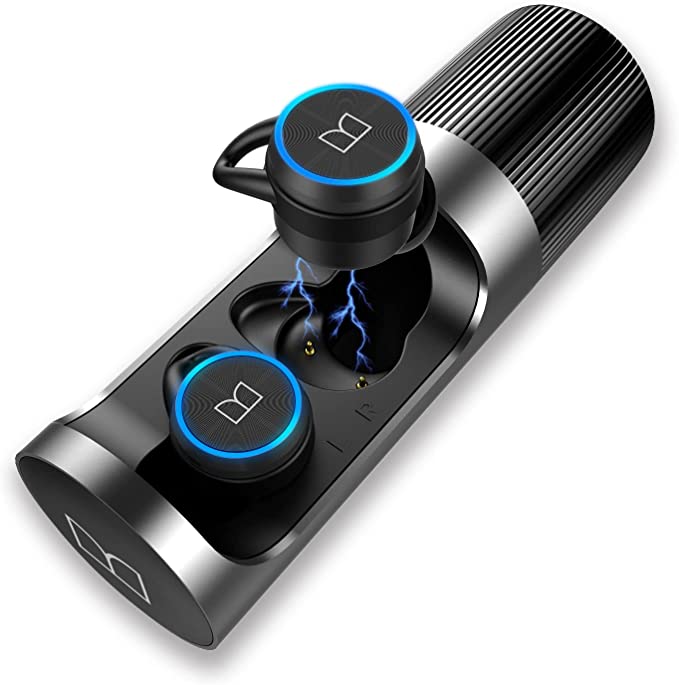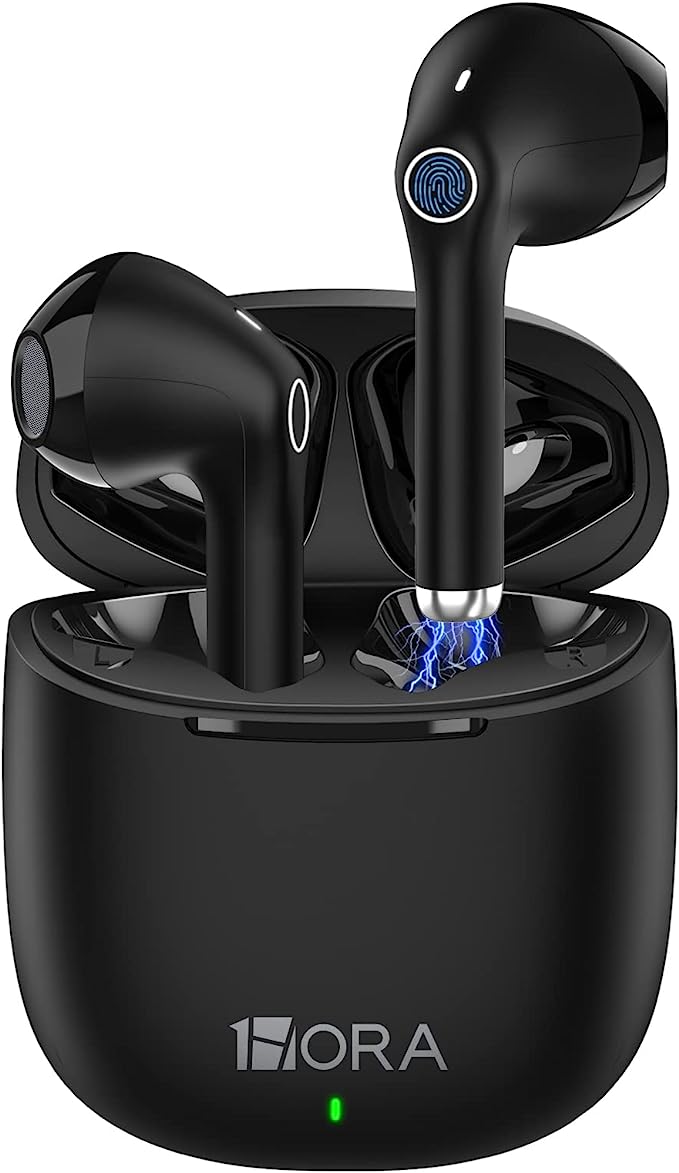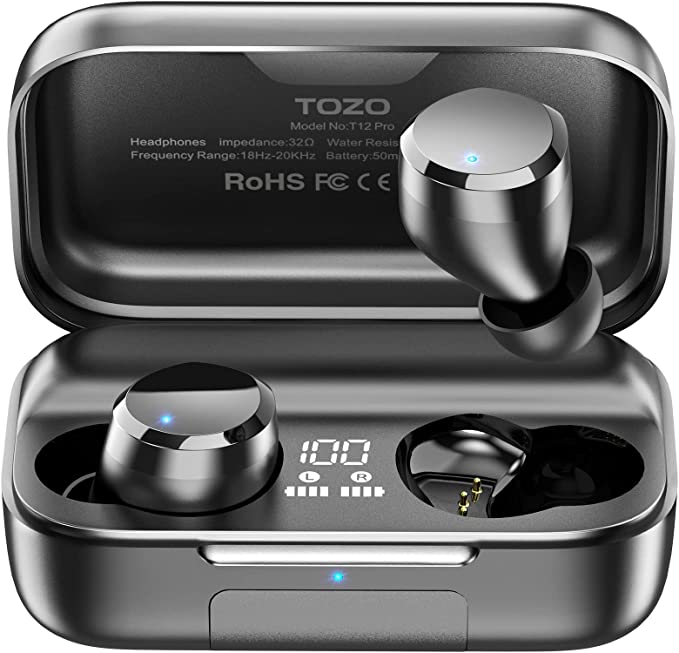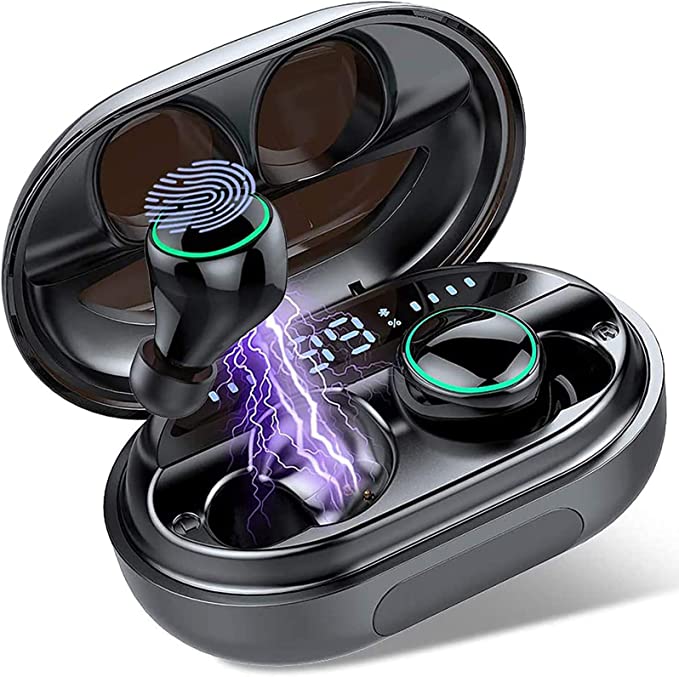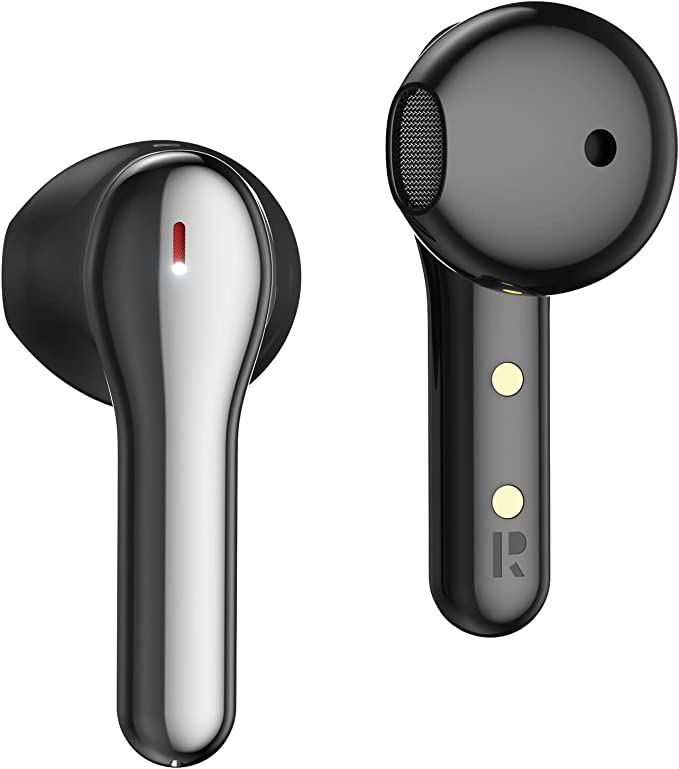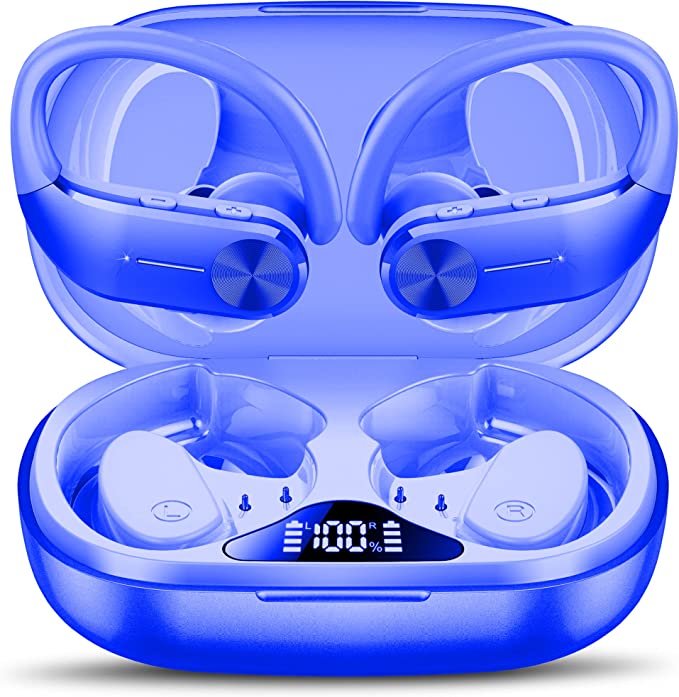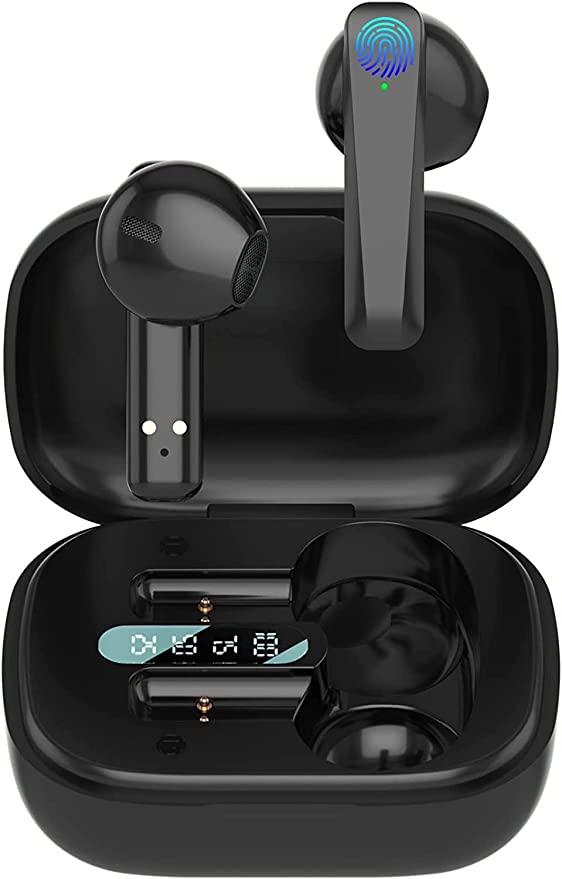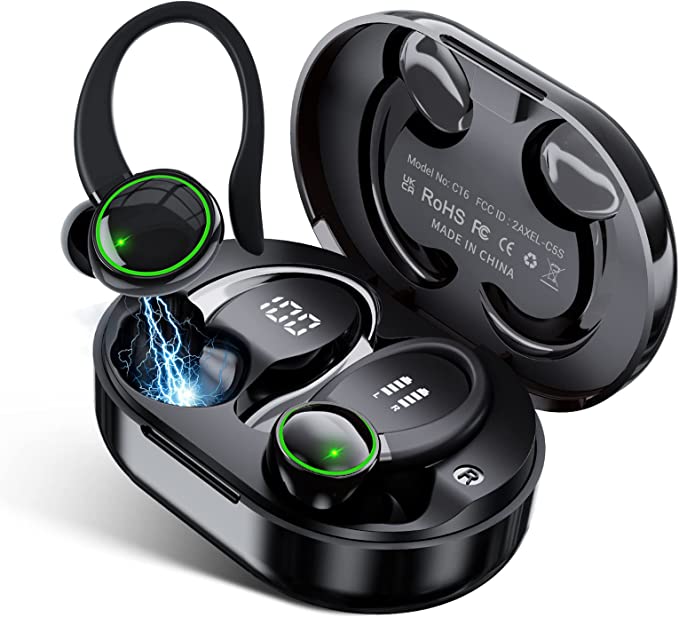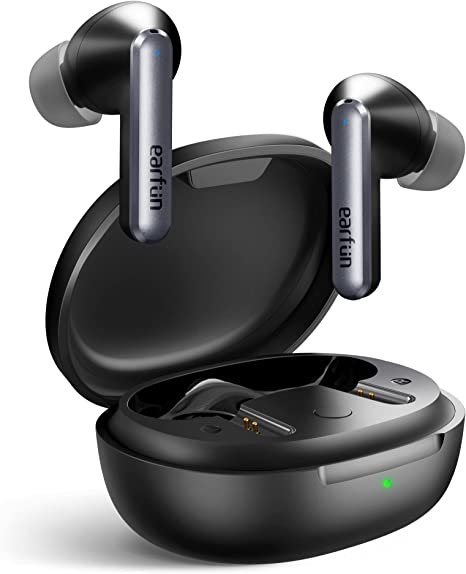Tomorsi J513A Wireless Earbuds: The Well-Rounded Wireless Earbuds for Immersive Listening
Update on June 23, 2025, 9:16 a.m.
In our bustling, ever-connected lives, wireless earbuds have morphed from a tech novelty into an almost indispensable extension of ourselves. Tucked into our ears, they deliver the soundtracks to our commutes, the motivating beats for our workouts, and the crucial links for our myriad calls. But have you ever paused to consider the sheer density of science and engineering nestled within these tiny audio companions? Let’s take the Tomorsi J513A Wireless Earbuds, a product well-regarded by users according to its Amazon feedback, as our guide and unpack the fascinating technology that transforms simple plastic and silicon into your personal audio haven.

The Heartbeat of Your Music: Decoding Sound from 10mm Drivers
At the core of any satisfying audio experience lies the ability to reproduce sound faithfully and powerfully. The J513A earbuds boast “10mm speakers,” or more accurately, 10-millimeter dynamic drivers. Think of these as miniaturized versions of the large speakers you’d see at a concert, tasked with the incredible job of converting electrical signals into the sound waves that delight our ears.
How do they pull off this magic? It’s all down to a beautiful dance of physics. Inside each earbud, the dynamic driver contains a diaphragm (a thin, cone-like membrane), a voice coil (a finely wound coil of wire attached to the diaphragm), and a permanent magnet. When your music player sends an electrical audio signal – a complex current fluctuating with the music’s rhythm and tone – it flows through the voice coil. This current generates a temporary magnetic field around the coil, which then interacts with the field of the permanent magnet. This push and pull causes the voice coil, and with it the diaphragm, to vibrate rapidly back and forth. These vibrations push and pull the air, creating pressure waves – sound waves – that travel down your ear canal.
The “10mm” specification refers to the diameter of this diaphragm. Generally, a larger diaphragm can move more air. This is particularly crucial for reproducing low-frequency sounds, the “powerful bass” that users often praise in the J513A. It allows for that satisfying thump and richness in the lower registers. However, crafting great sound isn’t just about size. The material of the diaphragm, its shape, and the acoustic design of the earbud housing all play critical roles in ensuring that these drivers also deliver “clear mids,” where vocals and most instruments reside, and “bright highs,” for the crisp detail in cymbals or string instruments.
Furthermore, the J513A delivers “HD stereo audio.” Stereo, meaning “solid” or “three-dimensional” in Greek, utilizes two independent audio channels, one for each ear. This allows sound engineers to place different sounds in different perceived locations, creating a wider, more immersive soundscape. It’s the difference between hearing music as a flat wall of sound versus feeling like you’re in the room with the musicians, a fundamental aspect of how we’ve enjoyed recorded music for decades, now seamlessly delivered wirelessly.

The Invisible Lifeline: Bluetooth 5.3 and Uninterrupted Connections
The “wireless” in wireless earbuds is, of course, courtesy of Bluetooth technology. The Tomorsi J513A comes equipped with “the latest Bluetooth 5.3.” This isn’t just an arbitrary number; each iteration of the Bluetooth standard, managed by the Bluetooth Special Interest Group (SIG), brings tangible improvements. Bluetooth itself was conceived in the late 1990s as a way to replace the cumbersome cables connecting devices, and it transmits data over short-range radio waves in the 2.4 GHz band – the same band used by Wi-Fi, which makes careful engineering crucial to avoid interference.
So, what does version 5.3 bring to your listening experience? Primarily, it focuses on greater efficiency and reliability. Bluetooth 5.3 offers enhancements in how devices classify channels, allowing them to pick less congested pathways for data transmission, leading to a more stable connection with fewer dropouts or stutters – that “quick and consistent” signal transmission mentioned for the J513A. It also introduces features for improved power efficiency (Low Energy, or LE, audio enhancements), which means your earbuds can communicate with your phone or other devices using less battery, contributing to that impressive overall playtime. While we don’t know the specifics of which Bluetooth audio codecs (the compression/decompression algorithms like SBC, AAC, or aptX that shrink audio data for wireless transmission) the J513A uses, a stable Bluetooth 5.3 connection ensures that whatever codec is in play gets the best possible chance to deliver clean audio.
And then there’s the “auto-connect” feature. Once you’ve initially paired the J513A with your device, subsequent connections are typically automatic when you open the charging case. This convenience is built upon Bluetooth’s ability to remember trusted devices, streamlining your daily interaction with your audio.

Powering Your Day (and Night): The Endurance of Modern Batteries
A major selling point for the J513A is its claimed “50Hrs Playtime.” It’s important to understand how this figure is typically achieved with true wireless earbuds. The earbuds themselves, drawing power from their own tiny internal batteries, might offer around 6 hours of continuous playback on a single charge – a duration one user review for the J513A confirms. The “50 hours” figure almost certainly includes the additional charges provided by the portable charging case. This case isn’t just for storage; it contains its own, larger battery. When you place the earbuds back into the case and close the lid, they begin to recharge. If the case holds, say, four to seven additional full charges for the earbuds, you reach that extended total listening time.
The unsung heroes here are compact, energy-dense Lithium-ion (or Lithium-polymer) batteries. The same battery chemistry that powers your smartphone and laptop has been miniaturized to fit within these tiny devices, offering a remarkable amount of energy for their size. Combined with the power-efficient Bluetooth 5.3 and other optimized components, they enable these earbuds to last through long commutes, extended workouts, or even multiple workdays before the case itself needs a top-up via its USB-C port.
Adding a layer of practical convenience is the “LED power display on the top of the charging case.” This allows you to easily check the remaining charge in the case and see the charging status of the earbuds. No more guessing if you have enough juice for your next outing – a small but significant detail that enhances the user experience.

“Can You Hear Me Now?” The Art of Clear Conversations Amidst Chaos
In our often-noisy world, being heard clearly on a phone call can be a challenge. The J513A features “call noise reduction technology” where its microphone “captures your voice clearly and filters out external ambient noise.” This is a form of Environmental Noise Cancellation (ENC), specifically designed to improve the call quality for the person on the other end of your call. (This is different from Active Noise Cancellation, or ANC, which is designed to reduce ambient noise for the wearer’s listening experience).
How does it work, generally speaking? Modern earbuds often use one or more microphones per earbud. Sophisticated Digital Signal Processing (DSP) algorithms then analyze the incoming sound. These algorithms are trained to differentiate the patterns and frequencies of human speech from common background noises like traffic, wind, or office chatter. Some techniques might involve beamforming, where multiple microphones work together to focus on sound coming from the direction of your mouth, effectively “listening” more to you and less to your surroundings. Other methods might use spectral filtering, identifying and reducing the volume of frequency bands predominantly occupied by noise. The goal is to isolate your voice signal, clean it up, and transmit a much clearer audio stream to your caller, making conversations less frustrating, no matter your environment. Think of it as a smart audio bouncer, only letting your voice get past the velvet rope.

Built for Real Life: IPX6 Waterproofing and the Nano-Shield
Life is unpredictable. A sudden rain shower on your run, or an intense workout session, can expose your electronics to moisture – a notorious enemy of delicate circuits. The J513A earbuds come with an “IPX6 waterproof” rating, thanks to a “nano-coating” on their internal components. Let’s break that down. The IP Code, or Ingress Protection Code, is an international standard (IEC 60529) that classifies the degrees of protection provided by enclosures of electrical equipment. The first digit (if present, here replaced by ‘X’) relates to protection against solid particles (like dust), and the ‘X’ means it hasn’t been specifically rated for dust ingress. The second digit, ‘6’ in IPX6, signifies protection against powerful water jets. This means the earbuds can withstand strong sprays of water from any direction – so, sweat and rain are definitely not an issue. However, it doesn’t mean they are suitable for submersion, like swimming.
The “nano-coating” is the invisible hero here. This is an ultra-thin layer of specialized material, often a polymer, applied to the internal circuitry. At a microscopic, or nanometer, scale, this coating creates a hydrophobic (water-repelling) surface. Instead of allowing water molecules to spread and seep into sensitive areas, it causes them to bead up and roll off, much like water on a freshly waxed car. This invisible armor provides a crucial layer of defense, enhancing the durability and longevity of the earbuds, especially for active users.

Effortless Command: The Simplicity of Smart Touch
Interacting with your earbuds shouldn’t be a fiddly affair. The J513A incorporates “smart touch controls,” allowing you to manage playback, calls, and even summon your phone’s voice assistant with simple taps or holds on the earbud surface. This is typically achieved through capacitive touch sensing. The surface of the earbud acts as one plate of a capacitor. Your fingertip, being conductive, alters the local electrostatic field when it comes close to or touches the sensor. This change in capacitance is detected by the earbud’s microcontroller, which then translates it into a command – play, pause, skip track, answer call.
Beyond the sleek, buttonless aesthetic, touch controls offer practical advantages. They eliminate moving parts that could wear out or break. They also contribute to better sealing against moisture and dust, complementing features like the IPX6 rating. It’s a subtle but significant way technology makes interaction more intuitive and the device more robust.
Ergonomics and Portability: Sound That Travels With You
The physical design of wireless earbuds is just as important as their internal technology. The J513A’s charging case is highlighted for its “compact” and “pocket design,” making it easy to carry your audio companions wherever you go. This emphasis on portability is key to the appeal of true wireless earbuds – high-quality sound untethered and easily transportable.
Furthermore, while the product information lists “Form Factor: On Ear,” the images and user descriptions (“fits well,” “3 different sizes included” for ear tips, as per the initial draft’s summary of the Amazon page) strongly suggest an in-ear design. A proper in-ear fit is crucial for several reasons. Firstly, it provides passive noise isolation by creating a seal in your ear canal, which naturally blocks out some external sound, allowing you to focus on your music without needing to crank up the volume excessively. Secondly, this seal is vital for good bass response; if the earbuds don’t fit snugly, low-frequency sounds can “leak” out, resulting in a thin or tinny audio experience. The inclusion of multiple ear tip sizes allows users to find a comfortable and secure fit, enhancing both sound quality and long-term wearability.
The Symphony of Science: When Technology Translates to Experience
It’s one thing to list technical specifications, but it’s another for that technology to culminate in a genuinely positive user experience. The Tomorsi J513A has garnered a high 4.8 out of 5-star rating from 190 users (according to the provided Amazon data). This level of acclaim suggests that the blend of 10mm drivers, Bluetooth 5.3 stability, effective call noise reduction, robust waterproofing, and intuitive controls is resonating well. When users praise “great sound,” “easy connection,” or “clear calls,” they are, in essence, validating the successful implementation of the scientific principles we’ve explored. It’s a testament to how these individual technological threads are woven together to create a cohesive and enjoyable product.
Conclusion: Appreciating the Invisible Engineering in Your Ears
The Tomorsi J513A Wireless Earbuds, like many of their contemporaries, are a marvel of miniaturized engineering. They are a tangible example of how complex scientific principles – from the electromagnetism that drives sound, to the radio wave protocols that connect us, the chemistry of advanced battery life, and the material science of protective coatings – are harnessed to create devices that seamlessly integrate into and enrich our daily lives.
So, the next time you pop in your wireless earbuds, take a moment to appreciate the invisible symphony of science at play. It’s a quiet ingenuity, often taken for granted, but one that delivers your world of audio, one song, one podcast, one crystal-clear call at a time. The technology might be complex, but its goal is simple: to make your life sound a little better.
